Do you know these 30 common flowers and plants?
Author: Huaba@I am a melon seed
1. Petunia (Solanaceae)
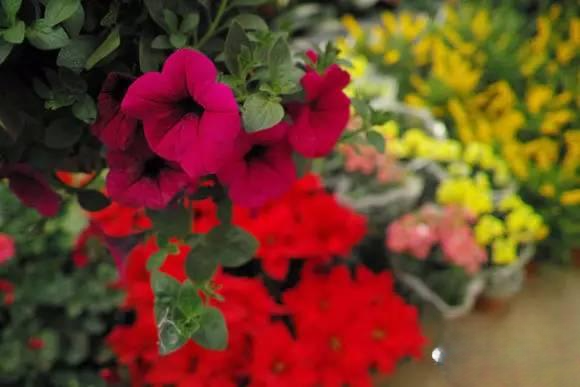
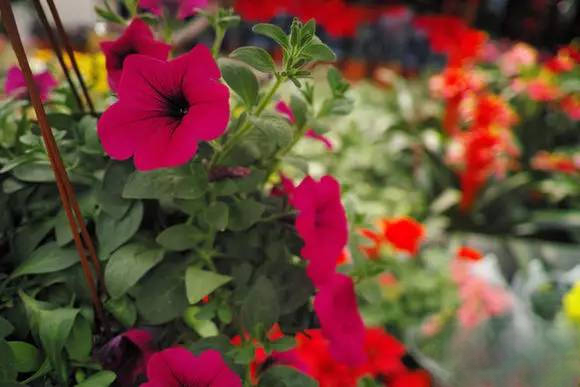
Although the name contains "morning glory", it is actually not a relative of morning glory. Morning glory belongs to the Convolvulaceae, while petunia belongs to the Solanaceae. Petunia has a very long flowering period. The seedlings sown in autumn will bloom in early spring of the following year. As long as the temperature is suitable, it will bloom almost every month.
Petunias do not perform well during the rainy season. After being exposed to rain, the flowers will have water spots, which affects their appearance. But don't worry, gardeners have already bred varieties that are resistant to high temperatures and rain as early as the year before last.
If you want petunias to bloom more, in addition to strengthening water and fertilizer management during the seedling stage, you should also pinch more often and expose them to more sunlight. Except for providing shade from 12 noon to 4 pm in summer, give them sufficient light at other times.
Petunia has a certain degree of cold resistance. In the Jianghuai region, autumn-sown seedlings can overwinter outdoors. If you do not want to keep seeds after flowering, you should remove the remaining flowers in time to prevent excessive consumption of nutrients.
2. Fortune seeds (Myrsinaceae)
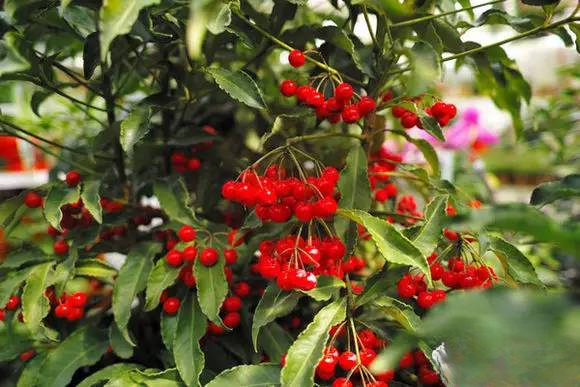
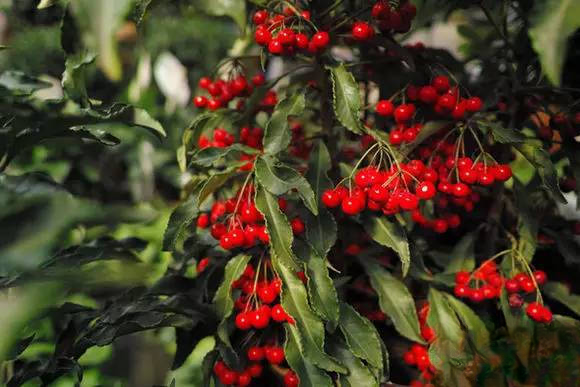
It likes shade and is slightly cold-resistant. It can spend the winter outdoors in areas south of the Yangtze River. It is often found in the wild and is usually propagated by sowing.
3. Six-fold Li (Campanulaceae)
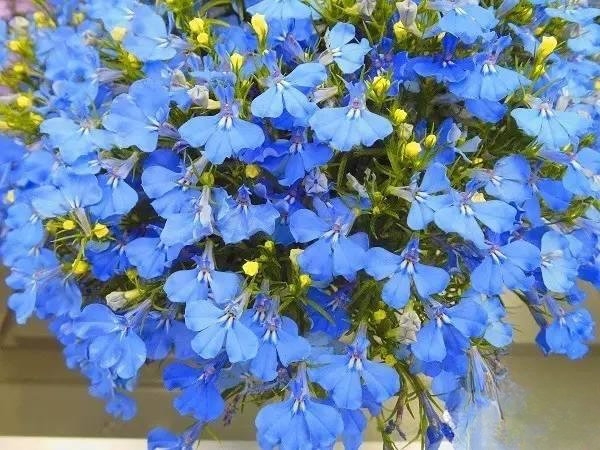
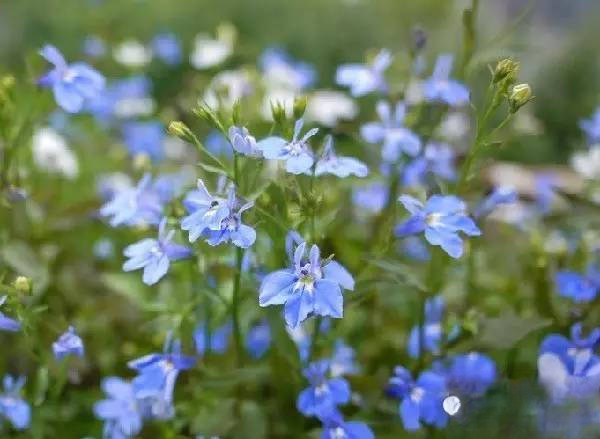
It is slightly cold-resistant. The autumn-sown seedlings in the Jiangnan region can overwinter in the open air. It likes long periods of sunlight, is afraid of high temperatures, and is mostly cultivated as a biennial plant.
4. Belgian azalea, also known as Western azalea (Ericaceae)
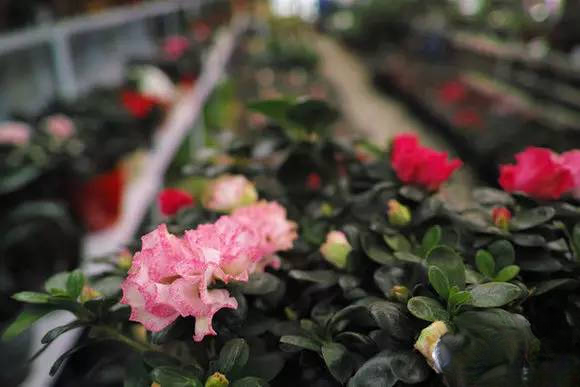
It was first bred in the Netherlands and Belgium. It is the product of repeated crossbreeding of azalea and European azalea. It has many colors and a long flowering period. It blooms continuously from mid-to-late October to May of the following year. It is afraid of cold and heat. In summer, it needs to be shaded and ventilated. After flowering, remove the remaining flowers and add an appropriate amount of organic fertilizer containing phosphorus. Azalea is very sensitive to fertilizers, and excessive use can easily cause fertilizer damage.
5. False Epiphyllum (Cactaceae)

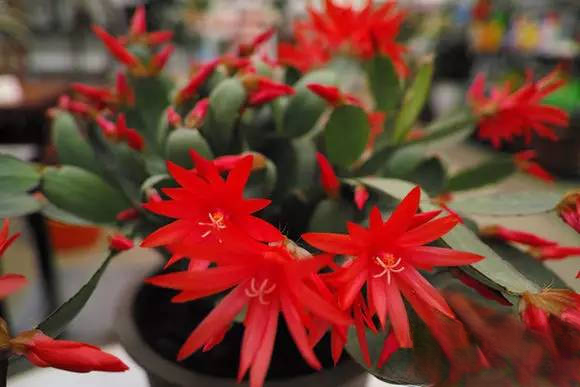
The difference between it and Christmas cactus and fairy finger is that the edges of the leaves are red, the color is darker, the leaves are thick, the stamens are short, and the serrations of the leaves are shallowly wavy.
6. Pansy (Violaceae)

The flowers are small, the colors are rich, the plants are dense, it is more heat-resistant than pansies, and the flowering period is longer. In Beijing, it can bloom until early July. The autumn-sown seedlings can overwinter in the open air in the Jianghuai region, and are mostly sown in spring in the north.
7. Pansy (Violaceae)

It blooms in winter, with the peak flowering period being March to April. It is slightly cold-resistant. The autumn-sown seedlings can overwinter outdoors in the Jianghuai region. In the north, they are mostly sown in spring and cultivated as one or two-year herbaceous flowers.
8. Bougainvillea, also known as Bougainvillea, Bougainvillea, and Bougainvillea (Nymphaeaceae)

The ornamental part is the bracts, which evolved from the leaves, and the real flower is the small white flower in the center.
It likes high temperature and high humidity, and cannot be watered or fertilized too much. If you want it to bloom early, you need to water it after the new leaves wilt. It needs more sunlight. The organic fertilizer usually used is mainly phosphorus fertilizer, and raw fertilizer should be avoided. You can also use potassium dihydrogen phosphate according to the instructions on the package during the flowering period, and spray the whole plant with water to prolong the flowering period and make the bracts colorful.
9. Calceolaria is also called Dioscorea (Scrophulariaceae)


The flowers are bulgy, like a small purse, hence the name. They are afraid of both cold and heat, prefer a cool and humid climate, have a long flowering period, and are long-day flowers, requiring a longer period of light from the seedling stage to flowering.
10. Pyracantha, also known as rescue food and torch fruit (Rosaceae)


A common garden plant, with flowers in spring and fruits in autumn and winter, it likes strong light, tolerates barrenness and drought, but is not cold-resistant; it can be planted in the open field south of the Yellow River. It is usually propagated by seeds.
11. Silver Star Bamboo Begonia (Begoniaceae)

The largest of the begonias, the plant is very large, reaching more than 1 meter. It needs to be heavily pruned after 3 years of growth. It is planted in a small pot at the beginning, and then in a deep pot. It likes semi-shade. If it is in partial shade, there will be few or no stars on the leaves, which will affect flowering. It is propagated by cuttings, and it is easy to root.
12. Rieger Begonia, also known as Rose Begonia (Begoniaceae)


It is a bit difficult to maintain, afraid of both cold and heat, and needs to be shaded, ventilated, and watered less during the high temperature in summer. Diseases such as stem rot, anthracnose, and brown spot often occur during the growing season, and red spider mites occasionally harm in winter.
13. Phalaenopsis (Orchidaceae)

Phalaenopsis is the most common orchid flower. It gets its name from the fact that its flowers resemble flying butterflies. The flower language is "I love you", symbolizing nobility and elegance.
14. Hydrangea (Saxifraga family)

The color changes of hydrangeas are related to the pH of the soil. If the soil is acidic, blue flowers will bloom; otherwise, red flowers will bloom. It is also related to the variety. Red hydrangeas only bloom red flowers, while white hydrangeas only bloom white flowers. They will also bloom pink flowers when the soil is low in temperature.
Hydrangea prefers shade and grows well in a semi-shaded and ventilated environment. Direct sunlight will cause the leaves to turn yellow or even have burnt spots, affecting its ornamental value. It has a certain degree of cold resistance and can overwinter outdoors in the Jianghuai region, but needs to be kept indoors for warmth in the northern region.
15. Golden Bark Echinops (Cactaceae)

Do not buy this kind of dyed golden barrel cactus. The dyed paint will seal the pores on the surface of the plant, hindering the plant's respiration and photosynthesis, and is also harmful to the human body.
16. Pitcher Plant (Nepenthaceae)


Nepenthes likes high temperature and high humidity. The main reason why pitcher plants do not grow in pitchers in the north in winter with heating is that the air is too dry. It is necessary to spray water on the plants and the surrounding environment to increase the humidity.
17. Torch pineapple (Bromeliaceae)

A pineapple variety with auspicious meaning, it has high ornamental value and prefers a warm, humid and sunny environment. It is not cold-resistant, but is more shade-tolerant and afraid of direct sunlight.
18. Purple pineapple, also known as Tillandsia (Bromeliaceae)

The mother plant of the Bromeliaceae withers after flowering, and reproduces by sucker buds near the roots. The small plants will take 3 years to bloom. Garden soil should not be used as the soil. Use peat soil and perlite in a ratio of 2:1, plus an appropriate amount of organic fertilizer. Sufficient light is needed during the flowering period, but not in the sun. The bracts will turn green in the shade.
19. European Primrose (Primulaceae)


Originated in Europe, it is widely cultivated internationally and is a famous small potted flower in winter and spring. It has bright colors and a long flowering period, and has a high ornamental value. It likes a warm and humid environment, and is not resistant to high temperatures, strong direct sunlight, or severe cold.
20. Black Magic Master (Crassulaceae)

It likes light, and the leaves will be green if there is insufficient light. It is dormant in the high temperature of summer. If you stop watering, the leaves will fall off. As long as the stem is not rotten, new leaves will sprout again in autumn. Echeveria is very sensitive to water. Water it when it is dry during the growing season. If it is not dry, don't water it. Excessive watering will easily cause root rot. Pay attention to ventilation.
21. Geranium (Geranaceae)


The heat tolerance of hanging celestial plants is better than that of upright celestial plants, so it is recommended to choose hanging celestial plants. The leaves of upright celestial plants turn white in summer, and some turn completely white, because of the high temperature and shade. As long as you control the water, keep the pot soil dry, and increase ventilation, they will survive the summer safely.
Geraniums are propagated by cuttings. Some varieties, such as Angel's Eye, take root more slowly and can be treated with rooting powder before cuttings.
22. Gloxinia (Gesneriaceae)

It is very easy to maintain. During the growing season, water it when the soil is dry and do not water it unless it is dry. It likes loose, breathable and well-drained sandy loam. You can also use peat soil, perlite and vermiculite in a ratio of 2:1:1, add a small amount of organic fertilizer, and usually place it in a place with good light and ventilation.
During the summer dormancy period, keep the pot soil dry and place it in a semi-shaded and ventilated place. Propagation can be done by leaf cuttings, sowing, and dividing tubers. The room temperature in winter should not be lower than 5℃, otherwise it will easily cause cold damage.
23. Aquilegia columbine (Ranunculaceae)

It has a certain degree of cold resistance. It is sown in autumn in the south and in spring in the north. After flowering, you should continue to add organic fertilizer containing phosphorus. In summer, the branches and leaves gradually turn yellow and enter a dormant period. Keep the original pot dry and put it in a semi-shaded and ventilated place. It will sprout again after the cool autumn.
24. Verbena (Verbenaceae)

The flower colors include white, red, blue, snow-blue, pink, etc. The flowering period is from May to November. It is very hardy and can be used as material for flower beds and flower borders. It can also be planted in large areas as potted flowers in places suitable for potted viewing or arranging flower beds, gardens, forest gaps, and tree altars.
25. Anthurium (Araceae)

It likes high temperature and high humidity. It is easy to keep in the south. In the north, the air humidity needs to be increased in the heated room in winter, and the water and soil should not be alkaline. Mix peat soil, perlite and vermiculite in a ratio of 2:1:1, add an appropriate amount of slow-release fertilizer, and spray potassium dihydrogen phosphate or Huaduoduo during the bud formation period (use with water according to the package instructions).
26. Snapdragon, also known as Dragon Head Flower (Scrophulariaceae)

It likes sunshine, has strong cold resistance, is afraid of heat, and is mostly cultivated as a biennial herb. It has a certain self-seeding ability, and the seeds will germinate by themselves when they fall into the pot. It should be noted that potted seedlings need to prevent damping-off disease and stem rot during the seedling stage.
Be careful not to use unsterilized soil, and pay attention to strengthening ventilation; do not sow too closely, it is best to use the immersion method to water; if you encounter diseased seedlings, pull them out immediately and spray methyl thiophanate for prevention and control (use with water according to the instructions on the packaging bag)
27. Rat-tail Palm (Cactaceae)

The beautiful flowers of the cactus family can be described as stunning when they bloom. The stems are slender and can be up to 2 meters long. They are usually cultivated as hanging plants and have small pink flowers. They bloom from April to May. The pink flowers open during the day and close at night, which is very interesting.
28. Nephrolepis serrata (Nephrolepis serrata)

It likes shade and humidity, is slightly cold-resistant, and likes to grow in loose, breathable, well-drained sandy loam. Household soil can be made by mixing peat soil, perlite and vermiculite in a ratio of 2:1:1, and an appropriate amount of organic fertilizer can be added.
In the south of the Yangtze River, it can spend the winter outdoors. The leaves are very good cut flower leaves, growing very fast, and need to be repotted once a year. It is suitable for cultivation in large pots.
For indoor cultivation, it is recommended to place it in the bathroom, which has the function of purifying the air and deodorizing. The bathroom has high humidity and poor light, which is very suitable for the growth of ferns. Just pay attention to ventilation. The "small potatoes" grown from the rhizomes can be used for reproduction.
29. Lipstick flower (Gesneriaceae)

The perennial evergreen creeping herbaceous flower looks like lipstick, and its calyx is tubular, which is very similar to the tubular shell of lipstick, so it is called "Lipstick Chlorophytum". Its dark green leaves and bright red, peculiar corolla are quite popular among people, and it is a good choice for hanging ornamental flowers in the home.
30. Hibiscus arborescens (Acariaceae)

It enters a dormant period in mid-May. The bulbs should be dug out and placed in a dry, ventilated place, and then planted after the autumn cools down, usually in mid-October. If buds are found, it is recommended to plant them as soon as possible.
Keep it moist during the growing period, do not water it unless it is dry, add an appropriate amount of phosphorus-containing organic fertilizer every half month, and place it in a sunny place indoors to receive light in winter. It usually enters the flowering period in late December, and the peak flowering period is from February to March.